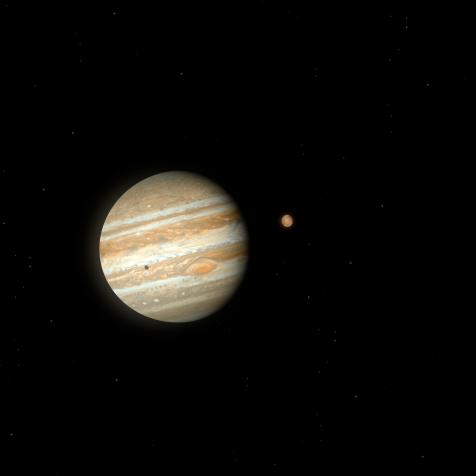
The Butterfly Effect Is Why It's Impossible to Predict the Weather
This is a concept invented by the American meteorologist.
You've probably heard that a butterfly can flap its wings in Brazil and set off a tornado in Texas. This is known as the butterfly effect, and while it shows up in everything from metaphors for human connection to the behavior of the stock market (not to mention an arguably low point in Ashton Kutcher's career), it got its start with a mild-mannered meteorology professor named Edward Lorenz. Just by rounding a few decimal points, he changed science forever.
Breezy With a Chance of Butterflies
One day in 1961, Lorenz was working in his office at MIT, entering data into a newfangled computer program designed to simulate weather patterns. The simulation was a repeat of one he'd run already, but this time he rounded off one of his 12 variables from .506127 to .506. Then he left his office to grab some coffee while the computer crunched the numbers.
When he came back, though, it was clear that something was very, very wrong. That tiny change in his data led to a drastic transformation, completely changing two months of simulated weather. Instead of small changes leading to other small changes, Lorenz realized that small changes could have huge consequences. He published his findings in 1963, and the idea came to be known as "sensitive dependence on initial conditions" in scientific circles. It got the much snappier "butterfly effect" moniker after Lorenz compared it to the idea that the flap of a butterfly's wings could affect the weather in a 1972 conference presentation.
That discovery was massive. As far back as Isaac Newton, scientists believed that everything in nature was predictable. That is to say, even if we don't have the means to predict everything now, it's conceivable that scientific knowledge could become advanced enough to predict the behavior of the entire universe. But Lorenz's discovery showed that even the tiniest quirk could throw a whole system out of whack. Scientific knowledge could never become advanced enough to predict the weather because the weather is unpredictable by nature. (No pun intended.)
Embrace the Chaos
The butterfly effect gave rise to something called chaos theory, which you might remember as Jeff Goldblum's character's specialty in "Jurassic Park." It centers on hard-to-predict phenomena like animal populations, stock prices, and even human behavior. Chaos may sound like it's out of the realm of mathematics — if it's unpredictable, where do you even start? — but everything in the universe is governed by rules, even if we're not aware of exactly what they are.
Chaos isn't randomness. One of the most famous illustrations of this came from Lorenz, who plotted a graph of solutions to equations representing the motion of a gas. The result looked, aptly enough, like a butterfly. That graph highlighted how chaos always has its limits.
But when it comes to chaos theory, even our best equations can't always nail 100 percent accuracy. That's especially true of the weather. While a butterfly's wings can't actually cause a tornado, other small quirks in the atmosphere, like the exact location of individual clouds, can have big effects that we can't predict. As Lorenz wrote in his pivotal 1963 paper, when his results are "applied to the atmosphere ... they indicate that prediction of the sufficiently distant future is impossible by any method, unless the present conditions are known exactly. In view of the inevitable inaccuracy and incompleteness of weather observations, precise very-long-range forecasting would seem to be non-existent." Fifty years later, and that hasn't changed.
This article first appeared on Curiosity.com.


















